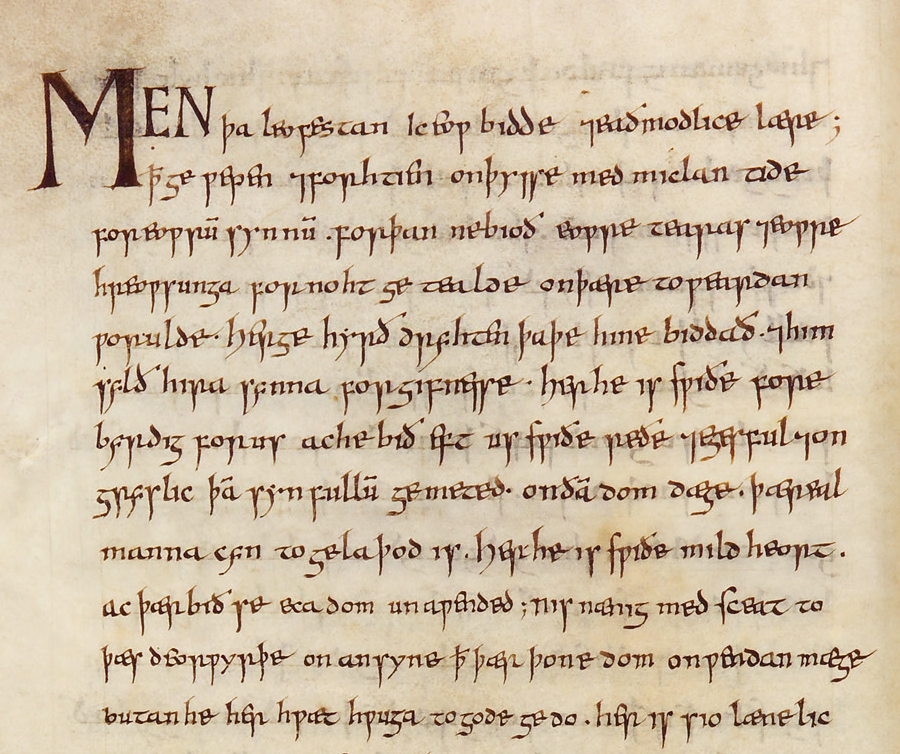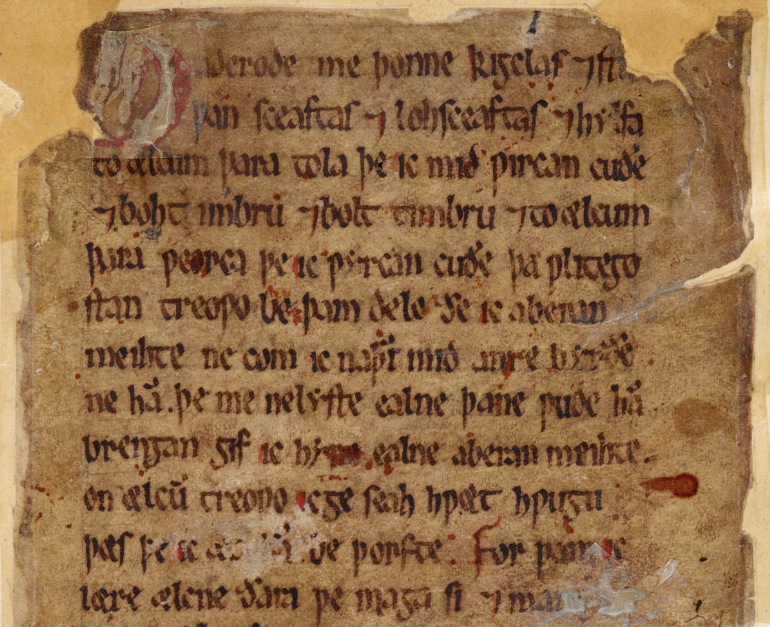Modern Art These Four Manuscripts Contain Almost All Surviving

Volume historians and rare manuscript librarians do non take the most glamorous jobs by the usual standards. They bargain with weathered, tattered, fragmentary scraps of text in archaic languages and lettering. It's piece of work unlikely to receive the Hollywood (or Netflix) treatment unless wizards, witches, or occult detectives are involved. Just the relative obscurity of these professions does not make the work any less valuable. Without dedicated archivists and preservationists, a slow collective amnesia, or worse, tin can set in.
1 might telephone call this attitude precious. Specialists are useful, art is nifty, but with sophisticated auto learning, we tin make, store, and print copies of every historical artifact in the world, along with all of the accumulated knowledge about them. What need to dote on crumbling manuscripts? Why the special condition of the original? The question, taken upwardly by Walter Benjamin in his 1936 essay, "The Work of Art in the Age of Mechanical Reproduction," comes downwards in part to something he chosen "aura."
Have the case of iv manuscripts, all of which recently appeared together at the British Library's extensive exhibition Anglo-Saxon Kingdoms: Fine art, Give-and-take, War: The Vercelli Volume, the Junius Manuscript, the Exeter Book, and the BeowulfManuscript contain riddles, religious texts, elegies, and the oldest manuscript of the oldest known verse form in English language. These represent the sum total of extant original literary manuscripts in Old English, a natural language several centuries distant from our own but nevertheless embedded deep within the construction of every modern version of the language.

Each manuscript has what, as Benjamin wrote, "even the about perfect reproduction of a piece of work of fine art is lacking… its presence in fourth dimension and space, its unique beingness at the identify where it happens to be." Josephine Livingstone puts the matter more plain at The New Commonwealth.
Why are these four books so special? It has to do, I think, with the concept of the original—a concept we take nearly entirely lost touch with. The Beowulf Manuscript… is non merely a representation of a story; it is the story…. The manuscripts confront the states with a sometime version of our literary selves; identities that nosotros barely recognize, and which estrange us from ourselves.
We tin reproduce history infinitely, but the just mode to feel the humbling otherworldliness that dwarfs our cramped ideas virtually information technology is through its physical remainders. Livingstone doesn't clarify whom she includes in the phrase "our literary selves," but we might besides say, at minimum, this means every speaker of English and everyone who has read English language literature in translation or felt the influence of English words and phrases in other languages.
We acquire the linguistic communication we hear and read from literary sources, nonetheless remote; they are constitutive, the threads that weave together cultural narratives into a larger pattern. The original work of art, Benjamin argued, similar the relic, has religious significance. And where the relic grounds the cult, fine art grounds material civilisation in such a mode, he thought, that it repels fascism's aesthetic obsession with destruction.

Original artifacts "must restore the instinctual power of the human being actual senses," literary scholar Susan Buck-Morss elaborates, "for the sake of humanity'south self-preservation." The statement may sound less grandiose in the context of Europe in 1936, or we might consider it just as relevant today (and aggrandize it to include non just art but nature).
We can rely on the fact that, should the BeowulfManuscript exist destroyed, Livingstone grants, "the poem would withal survive," equally would the prototype of the manuscript in very fine detail. That is "the hope independent in Benjamin'southward chant." But what is lost can never announced in the earth again. You lot tin can view most of these rare texts—The Vercelli Volume, the Junius Manuscript, and the BeowulfManuscript—in high resolution scans at the British and Bodleian Libraries.
The texts are a minuscule sampling of the number of cultural artifacts around the world worthy of preservation, and publicity. And they are a tiny sampling of the literary production of Old English language. But on them rests a corking bargain of our understanding nigh the linguistic ancestors of the language, with more than to learn, possibly, equally scanning engineering becomes even more advanced, illuminating rather than replacing the original.
via The New Republic
Related Content:
1,000-Yr-Former Manuscript of Beowulf Digitized and At present Online
Europe'south Oldest Intact Book Was Preserved and Found in the Coffin of a Saint
Ane of the Best Preserved Aboriginal Manuscripts of The Iliad Is At present Digitized: Encounter the "Bankes Homer" Manuscript in High Resolution (Circa 150 C.E.)
Wikipedia Leads Effort to Create a Digital Annal of 20 Million Artifacts Lost in the Brazilian Museum Burn down
Josh Jones is a writer and musician based in Durham, NC. Follow him at @jdmagness
Source: https://www.openculture.com/2018/11/entire-literary-history-old-english-contained-four-manuscripts.html
0 Response to "Modern Art These Four Manuscripts Contain Almost All Surviving"
Post a Comment